Your jeep wrangler may be overheating due to a low coolant level or a malfunctioning thermostat. While driving your jeep wrangler, it can be concerning if you notice that it is overheating.
This issue can be caused by different factors, but two common causes are a low coolant level or a malfunctioning thermostat. The coolant in your engine helps regulate its temperature, and if the level is too low, the engine can overheat.
Similarly, a faulty thermostat can prevent the coolant from flowing properly, resulting in overheating. Ensuring that your coolant level is sufficient and your thermostat is functioning correctly can help prevent your jeep wrangler from overheating.
In this article, We will explore why is my Jeep Wrangler overheating and we will discuss some possible reasons and how to fix it.
Signs Of Overheating To Look Out For
If you own a jeep wrangler, it’s important to be aware of the signs of overheating. Ignoring the issue can lead to costly repairs and potentially even engine damage. Keep an eye out for the following signs that your jeep wrangler may be overheating:
Increased Engine Temperature Gauge Readings
- The engine temperature gauge shows higher than normal readings, often moving towards the red zone.
- You may notice the temperature gauge consistently reaching or exceeding the halfway mark.
- Higher readings can indicate that the engine is working harder to cool down, a potential sign of overheating.
Steam Or Smoke Coming From The Engine
- If you see steam or smoke billowing from the engine compartment, it’s a clear indication of overheating.
- This could be caused by coolant leaking and coming into contact with hot engine components.
- It’s important to address this issue immediately to prevent further damage to your jeep wrangler.
Unusual Smells Or Odors From The Engine Compartment
- A strong odor, such as a burning smell, coming from the engine compartment is often associated with overheating.
- This can be a result of fluids or other materials leaking onto hot engine parts.
- It’s crucial to investigate the source of the odor and address the issue promptly.
Remember, if you notice any of these signs of overheating in your jeep wrangler, it’s essential to take action to avoid further damage. Ignoring the problem can lead to more severe issues down the line. Regular maintenance and monitoring the health of your vehicle can help prevent overheating and keep your jeep running smoothly on and off the road.
Stay vigilant and address any concerns promptly to keep your jeep wrangler in top condition.
Causes Of Jeep Wrangler Overheating
If you’re a jeep wrangler owner, you might have experienced the frustration of your vehicle overheating. Overheating can be a sign of underlying issues within your jeep’s cooling system, which requires immediate attention to prevent further damage. In this section, we’ll explore the common causes of jeep wrangler overheating and what you can do to resolve them.
Insufficient Coolant Levels
Insufficient coolant levels can be a major culprit behind your jeep wrangler overheating. Coolant, also known as antifreeze, helps regulate the engine’s temperature and prevents it from overheating. When the coolant level is low, there isn’t enough liquid to cool down the engine, leading to overheating.
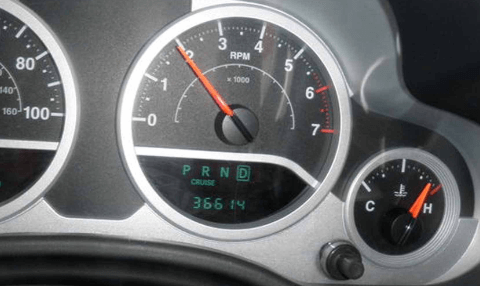
Here are some reasons why your coolant level may be low:
- Coolant leaks: Check for any visible coolant leaks under your jeep. Leaking hoses, radiator cracks, or a malfunctioning water pump can cause coolant to leak and result in low coolant levels.
- Evaporation: Over time, coolant can evaporate, especially during warmer months or if your engine runs hot frequently. Regularly checking and topping up the coolant level can help prevent overheating.
Faulty Thermostat
A faulty thermostat is another potential cause of jeep wrangler overheating. The thermostat helps regulate the flow of coolant through the engine, ensuring it stays within the optimal temperature range. If the thermostat malfunctions and gets stuck closed, it restricts the flow of coolant, causing the engine to overheat.
Look out for these signs of a faulty thermostat:
- Temperature gauge fluctuation: If your engine temperature gauge shows irregular readings, such as rapidly rising and falling, it might indicate a failing thermostat.
- Engine running hot or cold: A thermostat stuck in the closed position will cause the engine to overheat, while a thermostat stuck open will result in inefficient heating during colder weather.
Cooling System Leaks
Cooling system leaks can also lead to jeep wrangler overheating. A compromised cooling system can allow coolant to escape, reducing its effectiveness in regulating the engine’s temperature. Here are some common sources of cooling system leaks:
- Radiator leaks: Inspect your radiator for signs of leakage, such as coolant puddles underneath or visible cracks on the radiator itself.
- Hose leaks: Inspect all hoses connected to the cooling system, including the upper and lower radiator hoses, for any signs of cracks, bulges, or leaks.
- Water pump leaks: A faulty water pump can leak coolant and contribute to overheating.
Regularly checking for and addressing cooling system leaks can prevent overheating issues in your jeep wrangler. Remember to always address any underlying issues promptly to avoid further damage to your vehicle.
With a proper understanding of the causes of jeep wrangler overheating, you can take appropriate action to prevent or resolve these issues. Whether it’s maintaining sufficient coolant levels, addressing a faulty thermostat, or fixing cooling system leaks, staying proactive will ensure your jeep runs smoothly and avoids the headache of overheating.
Diy Troubleshooting And Solutions
It can be frustrating and concerning when your jeep wrangler starts overheating. Not only can it leave you stranded on the side of the road, but it can also potentially cause serious damage to your engine. Understanding why your jeep is overheating and knowing how to troubleshoot and solve the problem can save you time, money, and stress.
In this section, we will explore some diy troubleshooting and solutions to help you get to the bottom of the issue.
Checking And Topping Up Coolant Levels
- Coolant plays a crucial role in regulating your jeep’s engine temperature. Insufficient coolant levels can lead to overheating. Here’s how to check and top up your coolant levels:
- Open the hood and locate the coolant reservoir, usually a translucent plastic container with a cap labeled “coolant” or “antifreeze.”
- Ensure your engine is cool before removing the cap. If the engine is still hot, wait until it cools down to avoid injury.
- Check the coolant level against the markings on the reservoir. If it’s below the minimum level, add a 50/50 mixture of coolant and water until it reaches the proper level.
- Replace the cap tightly and start the engine to check if the temperature stabilizes.
Testing And Replacing The Thermostat
- A faulty thermostat can often be the cause of overheating in your jeep wrangler. Follow these steps to test and replace the thermostat if necessary:
- Ensure your engine is cool before starting. Locate the thermostat housing, usually situated near the engine block.
- Remove the housing and the thermostat.
- Place the thermostat in a pot of water and heat it on the stove gradually. Use a thermometer to monitor the temperature.
- Once the water reaches the recommended opening temperature for your thermostat, check if it opens fully. If it doesn’t, it’s likely faulty and needs to be replaced.
- Install a new thermostat by placing it in the housing, ensuring it’s positioned correctly and the gasket is intact. Reinstall the housing and secure it tightly.
Identifying And Fixing Cooling System Leaks
- Cooling system leaks can contribute to overheating in your jeep wrangler. Follow these steps to identify and fix any leaks:
- Inspect the engine bay and the surrounding areas for any signs of coolant leaks, such as puddles or stains.
- Check all hoses, clamps, and connections for looseness, cracks, or damage.
- If you discover a leak, determine the source and assess the severity. For minor leaks, you can try sealing them temporarily with cooling system sealer products. However, it’s advisable to have the issue fixed by a professional for a long-term solution.
- If necessary, replace damaged hoses or components. Ensure all connections are tightened properly.
- After addressing any leaks, monitor the coolant levels and temperature to ensure they remain stable.
By following these diy troubleshooting steps, you can effectively identify and address the causes of overheating in your jeep wrangler. However, if the problem persists or becomes more severe, it’s always best to consult a professional mechanic for a comprehensive diagnosis and repair.
Importance Of Regular Maintenance
Why Is My Jeep Wrangler Overheating
Is your jeep wrangler overheating? It’s a common issue that many jeep owners face, but understanding the reasons behind it and the importance of regular maintenance can help you prevent future problems. In this section, we will focus on the importance of regular maintenance and highlight key areas to check.
By following these simple steps, you can keep your jeep wrangler running smoothly and avoid costly repairs.
Flushing And Refilling The Cooling System:
- Over time, the coolant in the cooling system can become dirty and lose its effectiveness, leading to overheating. Flushing and refilling the cooling system regularly can help prevent this issue. Here’s why it’s important:
- Flushing the cooling system removes any buildup or contaminants that can hinder its performance.
- Refilling with fresh coolant ensures proper heat transfer and prevents overheating.
- Regular flushing and refilling also prolong the life of your entire cooling system.
Inspecting And Replacing Worn-Out Hoses And Belts:
- The hoses and belts in your jeep’s cooling system play a crucial role in maintaining the proper flow of coolant. Over time, these components can become worn-out and brittle, leading to leaks and malfunctions. Here’s why it’s important to inspect and replace them:
- Regular inspections help identify any signs of wear and tear, such as cracks or leaks.
- Replacing worn-out hoses and belts ensures proper coolant circulation, preventing overheating.
- It’s important to replace these components at the first signs of damage to avoid more significant issues down the line.
Cleaning The Radiator And Fan:
- The radiator and fan are responsible for dissipating the heat generated by your engine. Over time, they can accumulate dirt, debris, and even bugs, impairing their efficiency. Regular cleaning is essential to keep them functioning properly. Here’s why you should make it a part of your maintenance routine:
- Cleaning the radiator and fan removes any obstructions that can hinder airflow, reducing the risk of overheating.
- Regular cleaning improves the cooling system’s overall performance and prolongs its lifespan.
- Keeping these components clean ensures that your engine operates at optimal temperature levels, avoiding possible overheating scenarios.
Regular maintenance is the key to keeping your jeep wrangler’s cooling system in top shape and preventing overheating issues. By flushing and refilling the cooling system, inspecting and replacing worn-out hoses and belts, and cleaning the radiator and fan, you can ensure a smooth and reliable driving experience.
Don’t neglect regular maintenance – it will not only save you from costly repairs but also extend the life of your beloved jeep wrangler.
Preventive Measures For Overheating
Is your jeep wrangler constantly overheating and leaving you stranded on the side of the road? Dealing with an overheating engine can be a major headache, but fortunately, there are preventive measures you can take to avoid this issue. By regularly monitoring coolant levels, keeping an eye on the engine temperature gauge, and periodically inspecting and maintaining the cooling system, you can keep your jeep wrangler running smoothly and prevent overheating mishaps.
Regularly Monitoring Coolant Levels
Keeping an optimal coolant level is crucial in preventing your jeep wrangler from overheating. Here are the key points to consider:
- Check the coolant reservoir regularly: Make it a habit to inspect the coolant reservoir at least once a month. Ensure that the coolant level is at or above the minimum mark.
- Top up coolant as needed: If you notice that the coolant level is low, add a mixture of antifreeze and distilled water to bring it back to the required level. Follow the manufacturer’s guidelines for the correct coolant type and ratio.
- Look out for coolant leaks: Keep an eye out for any signs of coolant leaks, such as puddles under your jeep or a sweet smell inside the cabin. If you notice any leaks, have them repaired promptly to prevent coolant loss and overheating.
Keeping An Eye On The Engine Temperature Gauge
Monitoring the engine temperature gauge is an essential practice for preventing overheating. Here’s what you need to know:
- Familiarize yourself with the normal temperature range: Take note of the normal operating temperature range for your jeep wrangler. This can usually be found in the owner’s manual. Any significant deviation from the norm could be a sign of an overheating issue.
- Regularly check the gauge during your drive: Glance at the engine temperature gauge periodically while driving, especially during long trips or in hot weather conditions. If you observe a sudden increase in temperature, pull over and investigate the cause before continuing.
- Address issues promptly: If you notice the temperature gauge consistently reaching high levels, it’s essential to address the underlying problem promptly. Ignoring it can lead to severe engine damage.
Periodically Inspecting And Maintaining The Cooling System
The cooling system of your jeep wrangler plays a vital role in preventing overheating. Here are the key points to keep in mind:
- Inspect the radiator: Regularly inspect the radiator for any signs of damage, clogs, or leaks. Clear any debris that may be blocking airflow and have any radiator issues repaired as necessary.
- Check the radiator fan: Ensure that the radiator fan is functioning correctly. A faulty or malfunctioning fan can result in inadequate cooling, leading to overheating. Replace the fan if necessary.
- Flush and replace coolant: Over time, coolant can become contaminated with debris or lose its effectiveness. Periodically flush the cooling system and replace the coolant as recommended by the manufacturer.
- Inspect hoses and belts: Regularly inspect the hoses and belts connected to the cooling system for any signs of wear, cracks, or leaks. Replace any damaged components to maintain the system’s efficiency.
By following these preventive measures, you can minimize the risk of overheating in your jeep wrangler. Remember to stay proactive, prioritize regular inspections, and address any issues promptly. Taking these steps will help ensure that your jeep cruises along smoothly, free from the frustrations of an overheating engine.
When To Seek Professional Help
Persistent Overheating Issues Despite Diy Troubleshooting
If you’re experiencing persistent overheating issues with your jeep wrangler, even after attempting some diy troubleshooting, it may be time to seek professional help. Here are some key points to consider:
- Check the radiator: Ensure that the radiator is properly functioning and not clogged or damaged. If necessary, have a professional inspect and repair or replace it.
- Inspect the water pump: The water pump plays a crucial role in keeping your engine cool. If it is not working properly, it can lead to overheating issues. A professional can assess the water pump and determine if it needs to be repaired or replaced.
- Pressure test the cooling system: A pressure test can help identify leaks or weak spots in the cooling system that may be causing the overheating problem. A professional can perform this test and recommend the necessary repairs.
- Evaluate the thermostat: A malfunctioning thermostat can disrupt the flow of coolant and cause overheating. An expert can check the thermostat and recommend any necessary adjustments or replacements.
- Examine the head gasket: A blown head gasket can lead to your engine overheating. If you suspect this is the case, it is best to consult with a professional who can accurately diagnose the problem and perform the needed repairs.
Unusual Noises Or Vibrations During Overheating
If you notice unusual noises or vibrations while your jeep wrangler is overheating, it is essential to have the issue addressed promptly. Here are a few key points to consider:
- Strange noises: Unusual sounds, such as grinding, squealing, or hissing, during overheating may indicate a problem with the cooling system, such as a faulty fan or a leaking hose. An expert can diagnose and fix the issue before it leads to further damage.
- Vibrations: Vibrations or shaking that occur while your wrangler is overheating can be a sign of a more serious problem, such as a damaged water pump or a failing radiator. It is important to have a professional inspect and repair the issue to prevent further engine damage.
Coolant Leaks That Cannot Be Easily Fixed
If you notice coolant leaks in your jeep wrangler that cannot be easily fixed on your own, it is crucial to seek professional help. Here are a few key points to consider:
- Coolant leaks: Coolant leaks can cause your engine to overheat quickly. If you have tried to address the issue yourself but the leaks persist, it is best to consult with a professional to identify the source of the problem and perform the necessary repairs.
- Difficult repairs: Some coolant leaks may require complex repairs that are beyond the scope of diy troubleshooting. Professional assistance ensures that the repairs are done correctly and prevents further damage to your wrangler’s cooling system.
Remember, when faced with persistent overheating issues despite your own efforts, unusual noises or vibrations during overheating, or coolant leaks that cannot be easily fixed, it is recommended to seek professional help. They have the knowledge and expertise to diagnose and repair any underlying problems, keeping your jeep wrangler running smoothly and preventing further damage.
Frequently Asked Questions For Why Is My Jeep Wrangler Overheating
Why Is My Jeep Wrangler Overheating?
When your jeep wrangler is overheating, it could be due to a variety of reasons. One common cause is a malfunctioning thermostat that fails to regulate the engine’s temperature. Another possibility is a leaking or low coolant level. Additionally, a damaged water pump or a clogged radiator could also be the culprits.
Regular maintenance and inspection can help prevent these issues and ensure your jeep runs smoothly.
How Do I Know If My Jeep Wrangler Is Overheating?
Several signs indicate that your jeep wrangler might be overheating. These include a rise in the engine temperature gauge, steam coming from the engine, a strong smell of coolant, or an illuminated temperature warning light on the dashboard. If you notice any of these symptoms, it is important to address the issue promptly to prevent further damage to your vehicle.
What Should I Do If My Jeep Wrangler Is Overheating?
If your jeep wrangler starts to overheat, it is crucial to take immediate action. First, pull over to a safe location and turn off the engine. Allow the vehicle to cool down before touching anything under the hood. Check the coolant level and radiator for any leaks or blockages.
If necessary, add coolant or water to the radiator. It is advised to contact a professional mechanic to diagnose and repair any underlying issues causing the overheating.
Can A Faulty Thermostat Cause My Jeep Wrangler To Overheat?
Yes, a faulty thermostat can lead to overheating in your jeep wrangler. The thermostat’s role is to regulate the engine’s temperature by allowing coolant to flow through the engine when it reaches the optimal temperature. If the thermostat fails to open or close properly, it can disrupt this process, causing the engine to overheat.
Regular inspection and replacement of the thermostat can help prevent this issue.
How Often Should I Check The Coolant Level In My Jeep Wrangler?
Checking the coolant level in your jeep wrangler regularly is essential to maintain the engine’s temperature. It is recommended to inspect the coolant level at least once a month or before embarking on long drives. Ensure the engine is cool before opening the radiator cap or coolant reservoir.
If the coolant level is low, add a mixture of coolant and water according to your vehicle’s specifications. Regular coolant level checks help prevent overheating and potential engine damage.
Conclusion
To ensure your jeep wrangler stays cool on the road, it’s crucial to address any overheating issues promptly. By understanding the common causes of overheating, such as a faulty radiator, low coolant levels, or a malfunctioning thermostat, you can take the necessary steps to prevent future problems.
Regular maintenance, including checking and replacing coolant, inspecting hoses for leaks or blockages, and ensuring proper airflow to the radiator, can help keep your engine running at an optimal temperature. Don’t ignore warning signs like a rising temperature gauge or steam coming from under the hood.
Trusting your instincts and seeking professional help when needed can save you from more extensive and expensive repairs down the road. Take care of your jeep wrangler, and it will continue to provide you with memorable adventures for years to come.

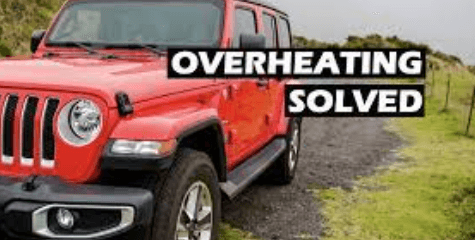
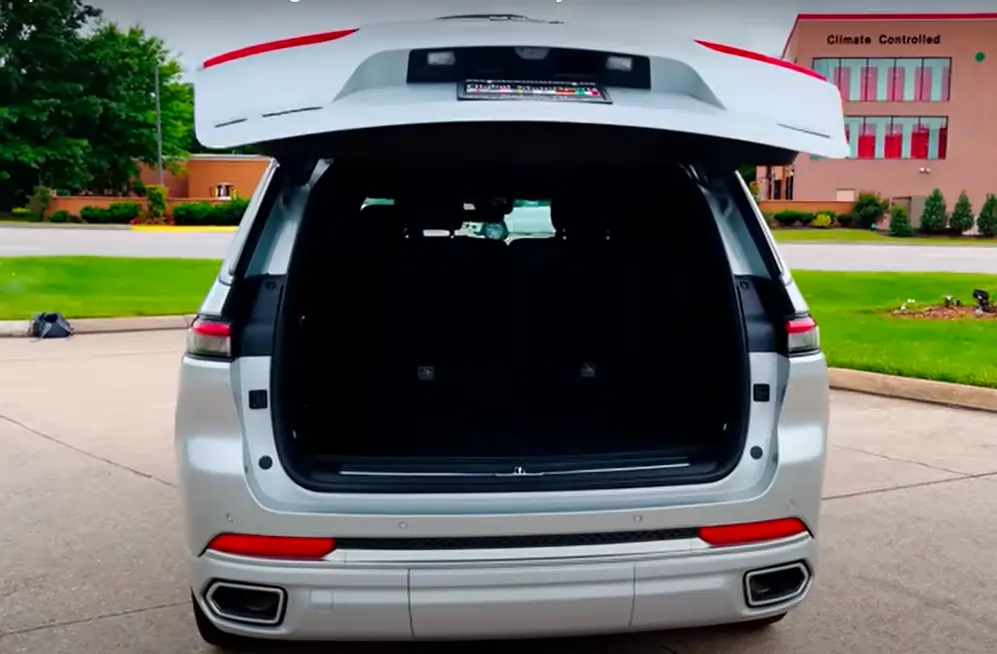
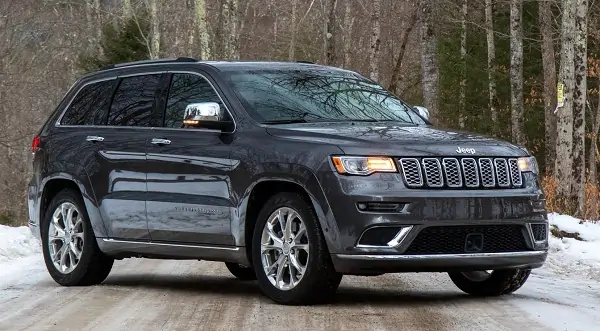




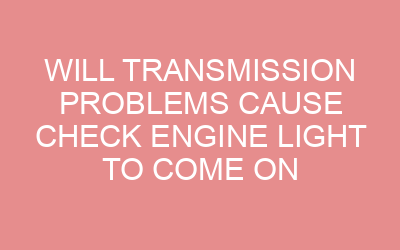
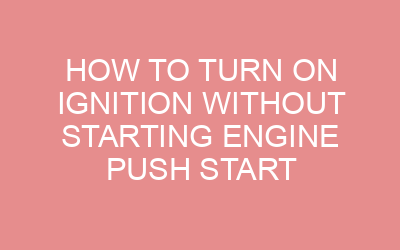




Leave a Reply